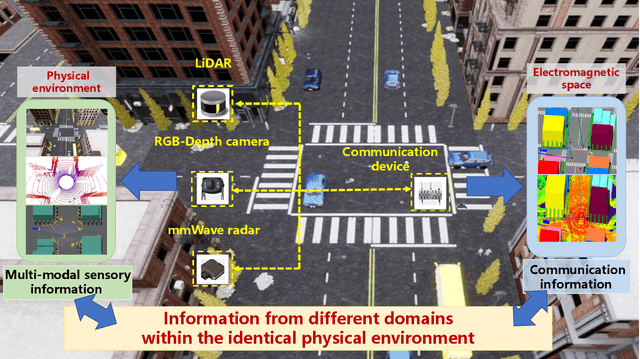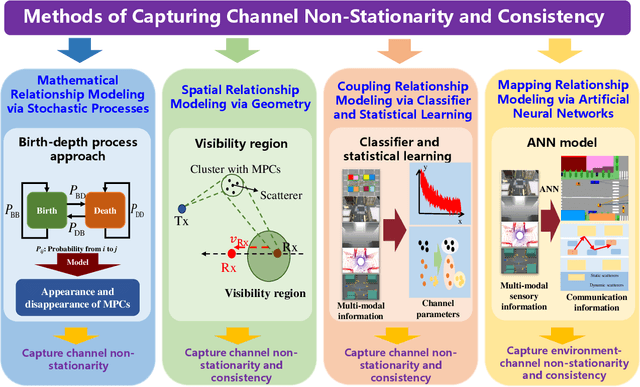Multi-Modal Intelligent Channel Modeling: A New Modeling Paradigm via Synesthesia of Machines
Paper and Code
Nov 06, 2024



In the future sixth-generation (6G) era, to support accurate localization sensing and efficient communication link establishment for intelligent agents, a comprehensive understanding of the surrounding environment and proper channel modeling are indispensable. The existing method, which solely exploits radio frequency (RF) communication information, is difficult to accomplish accurate channel modeling. Fortunately, multi-modal devices are deployed on intelligent agents to obtain environmental features, which could further assist in channel modeling. Currently, some research efforts have been devoted to utilizing multi-modal information to facilitate channel modeling, while still lack a comprehensive review. To fill this gap, we embark on an initial endeavor with the goal of reviewing multi-modal intelligent channel modeling (MMICM) via Synesthesia of Machines (SoM). Compared to channel modeling approaches that solely utilize RF communication information, the utilization of multi-modal information can provide a more in-depth understanding of the propagation environment around the transceiver, thus facilitating more accurate channel modeling. First, this paper introduces existing channel modeling approaches from the perspective of the channel modeling evolution. Then, we have elaborated and investigated recent advances in the topic of capturing typical channel characteristics and features, i.e., channel non-stationarity and consistency, by characterizing the mathematical, spatial, coupling, and mapping relationships. In addition, applications that can be supported by MMICM are summarized and analyzed. To corroborate the superiority of MMICM via SoM, we give the simulation result and analysis. Finally, some open issues and potential directions for the MMICM are outlined from the perspectives of measurements, modeling, and applications.
 Add to Chrome
Add to Chrome Add to Firefox
Add to Firefox Add to Edge
Add to Edge